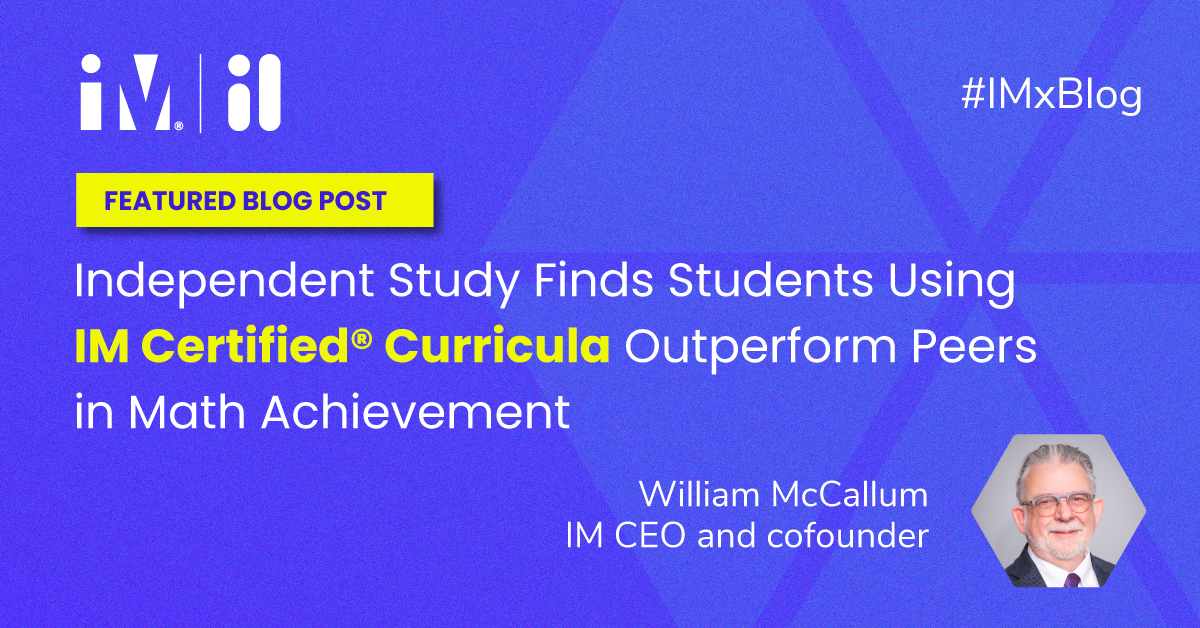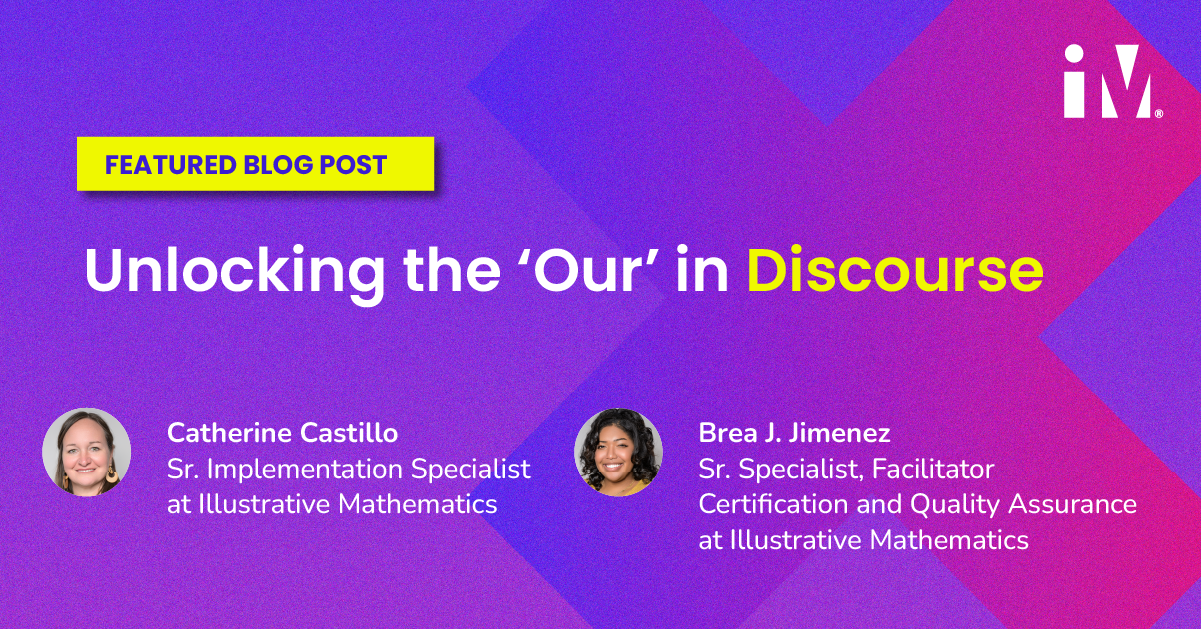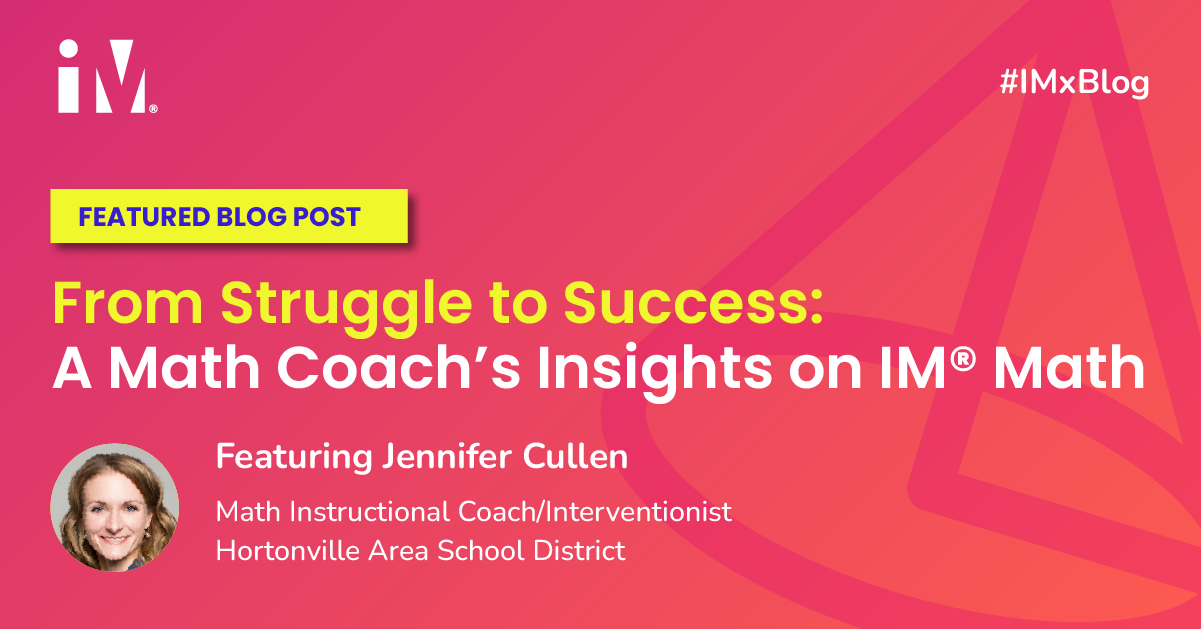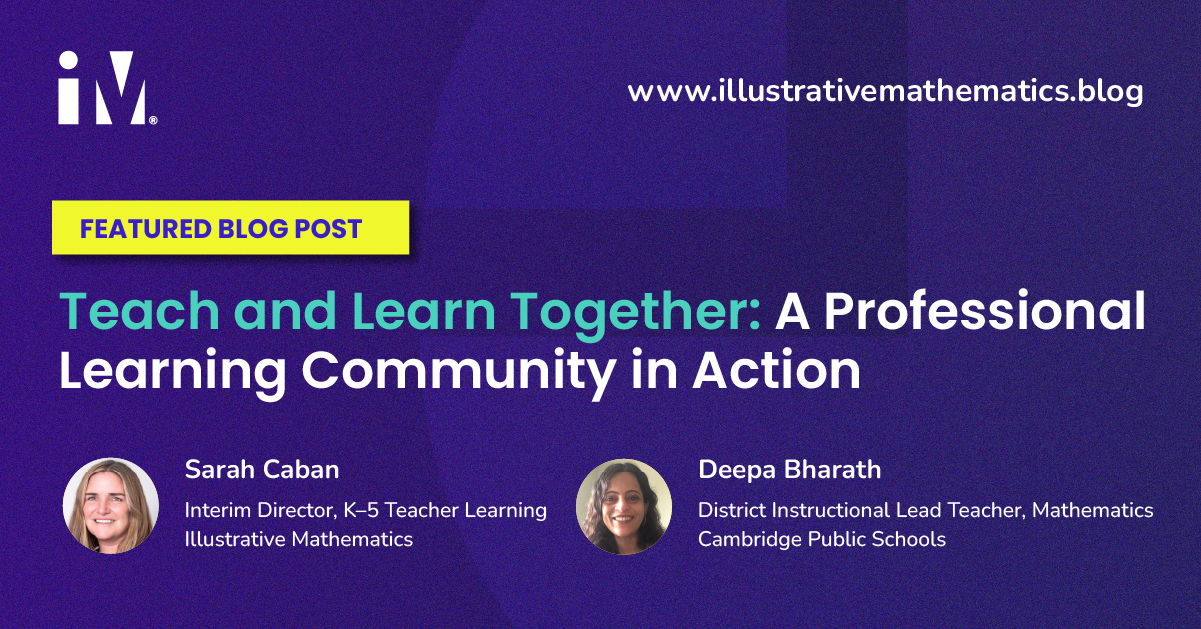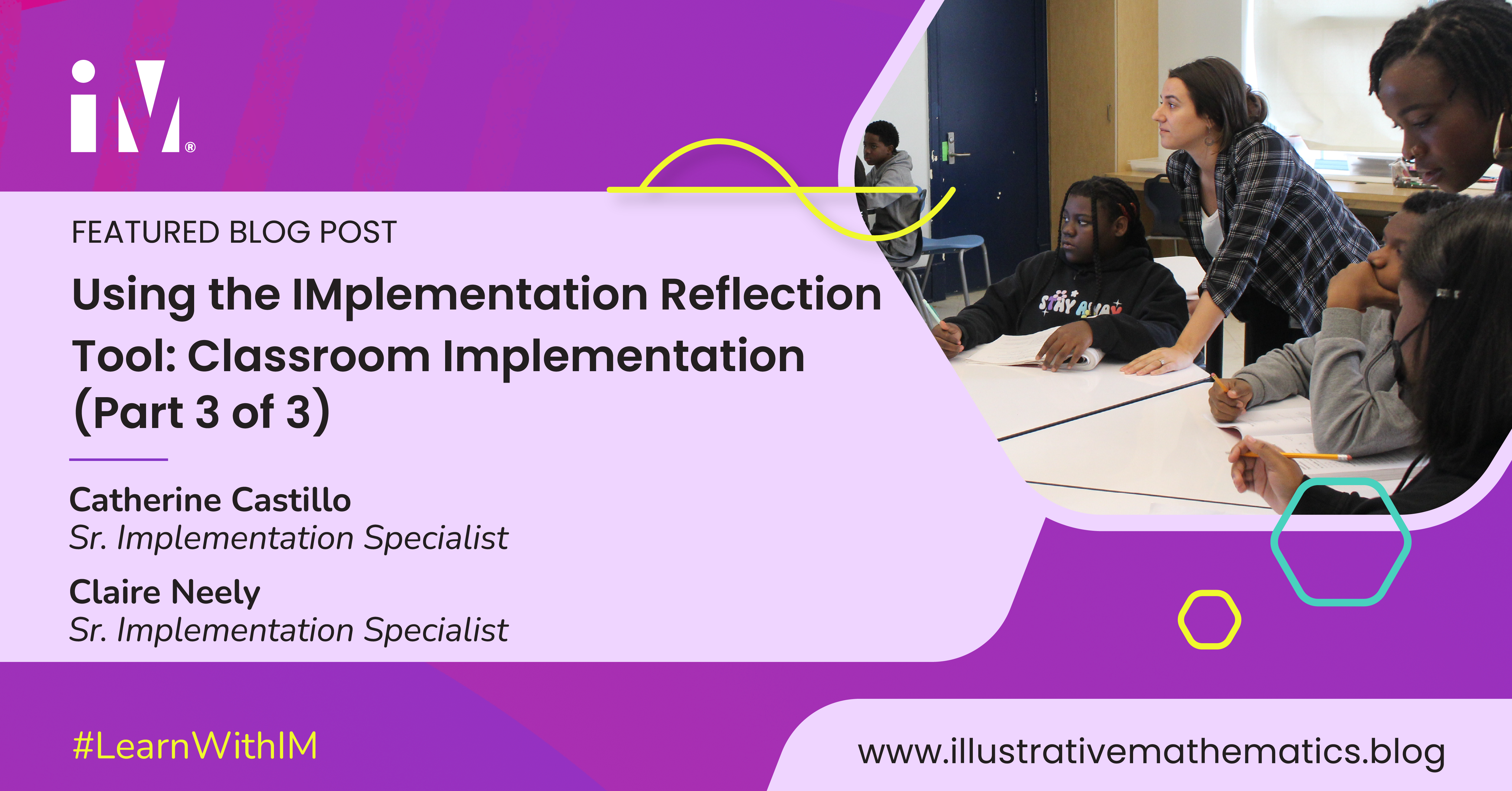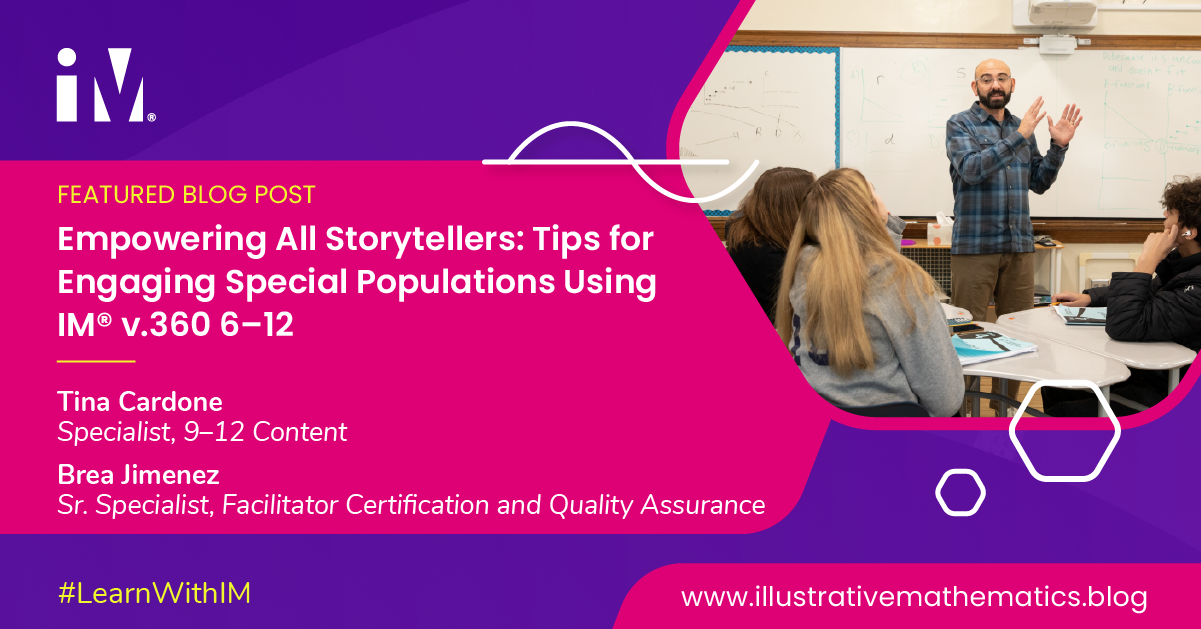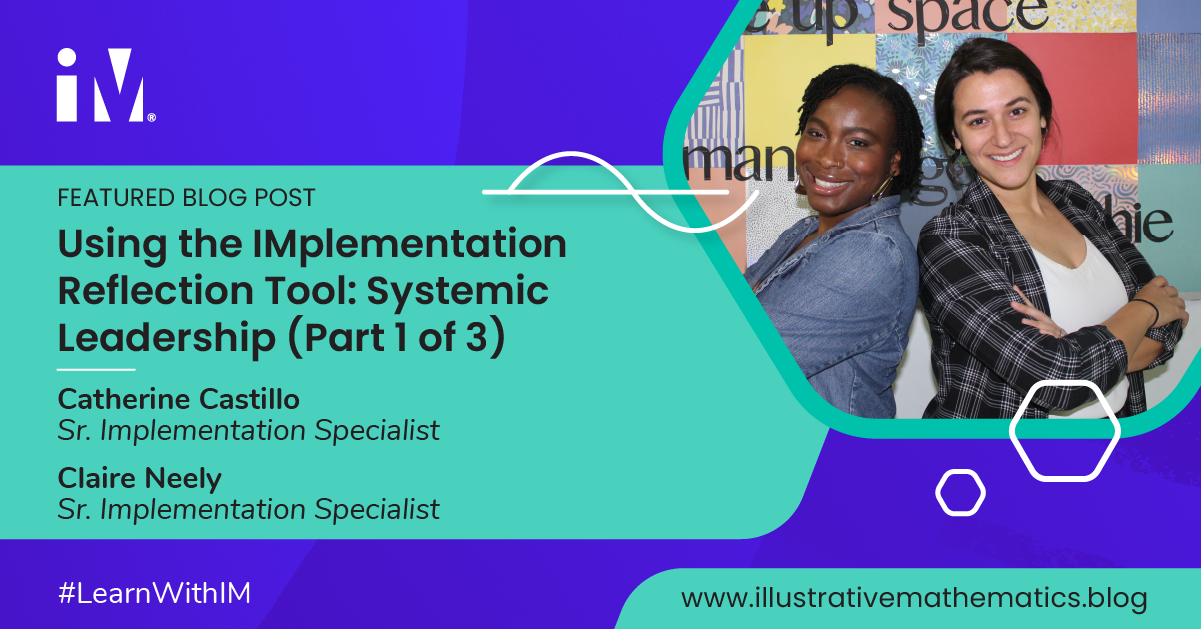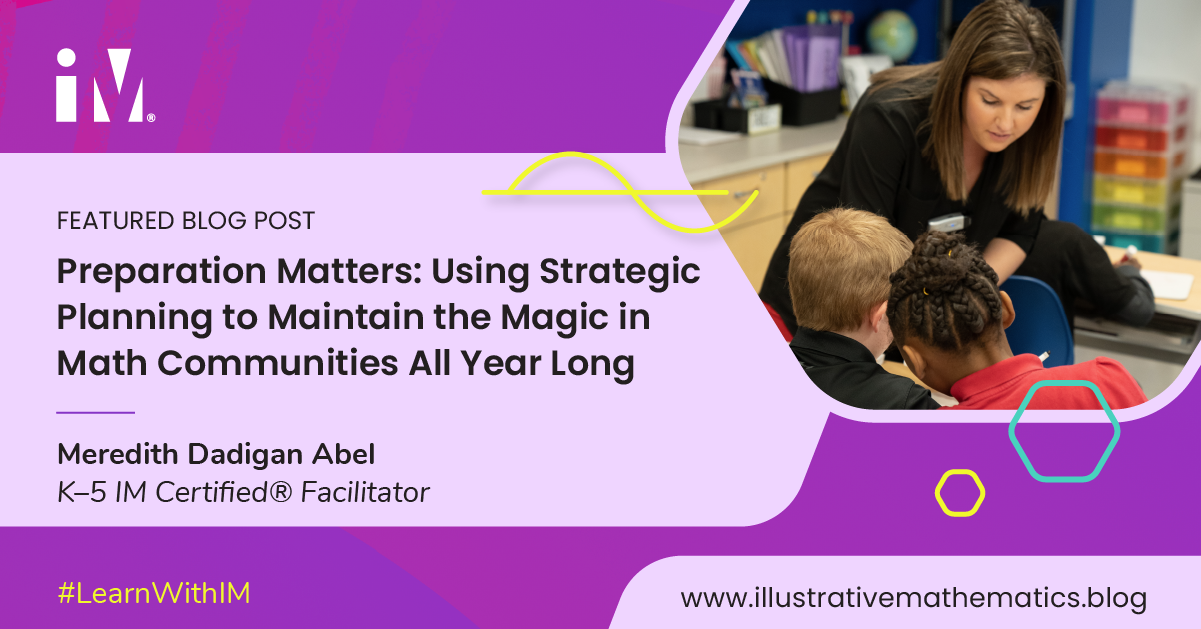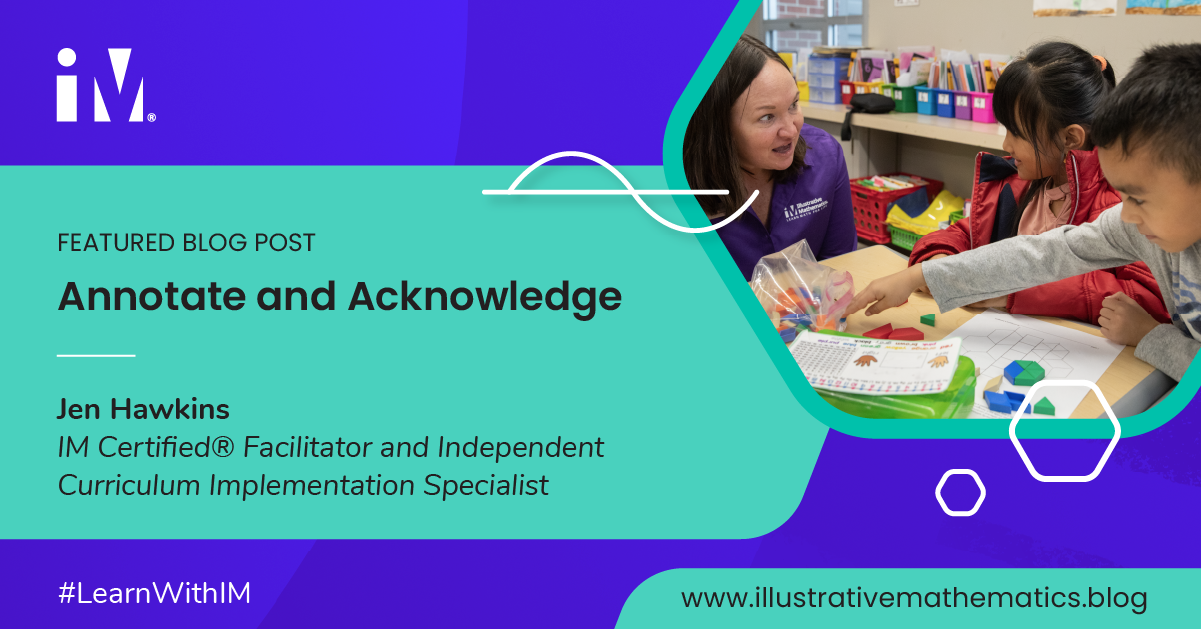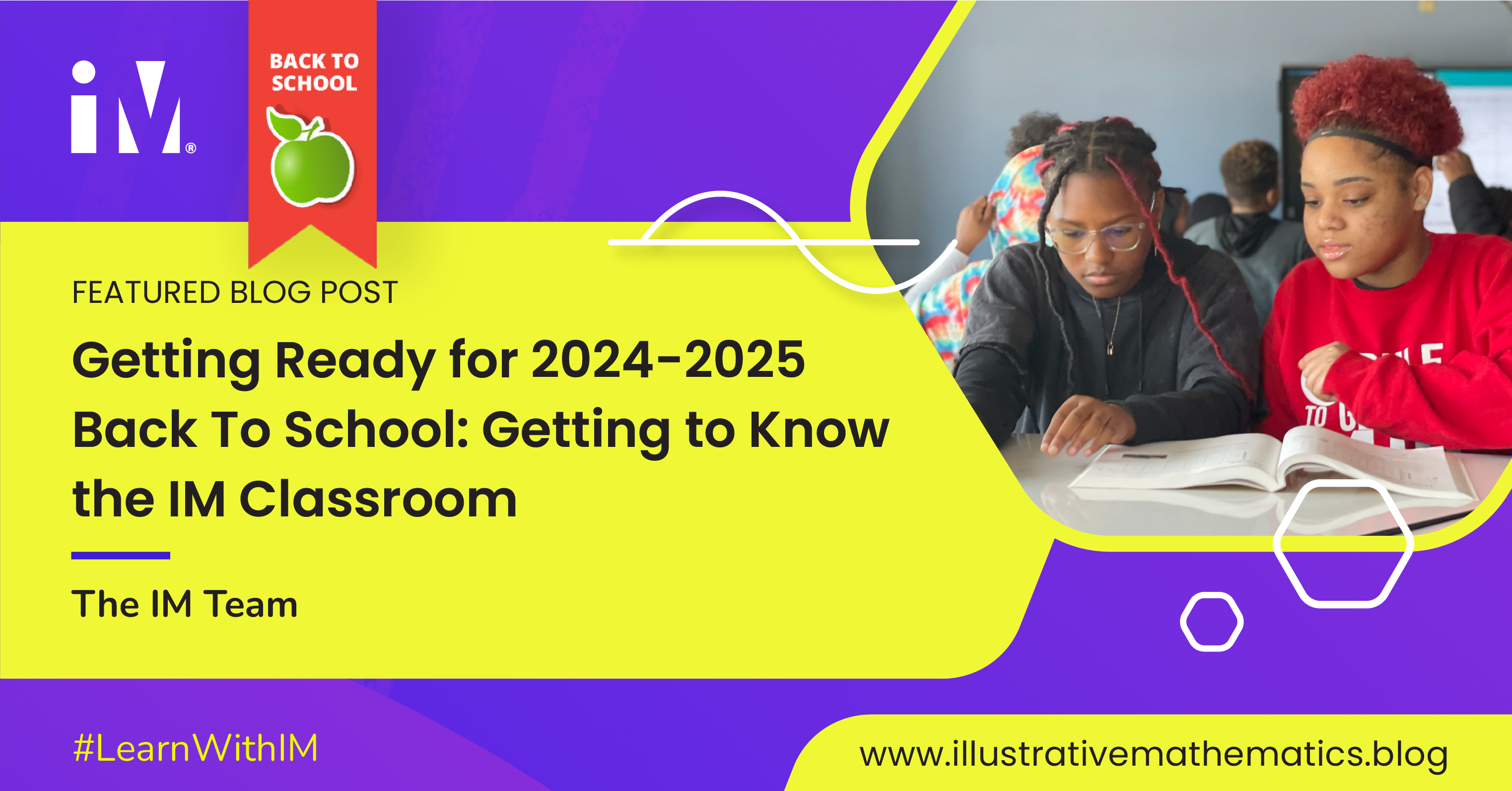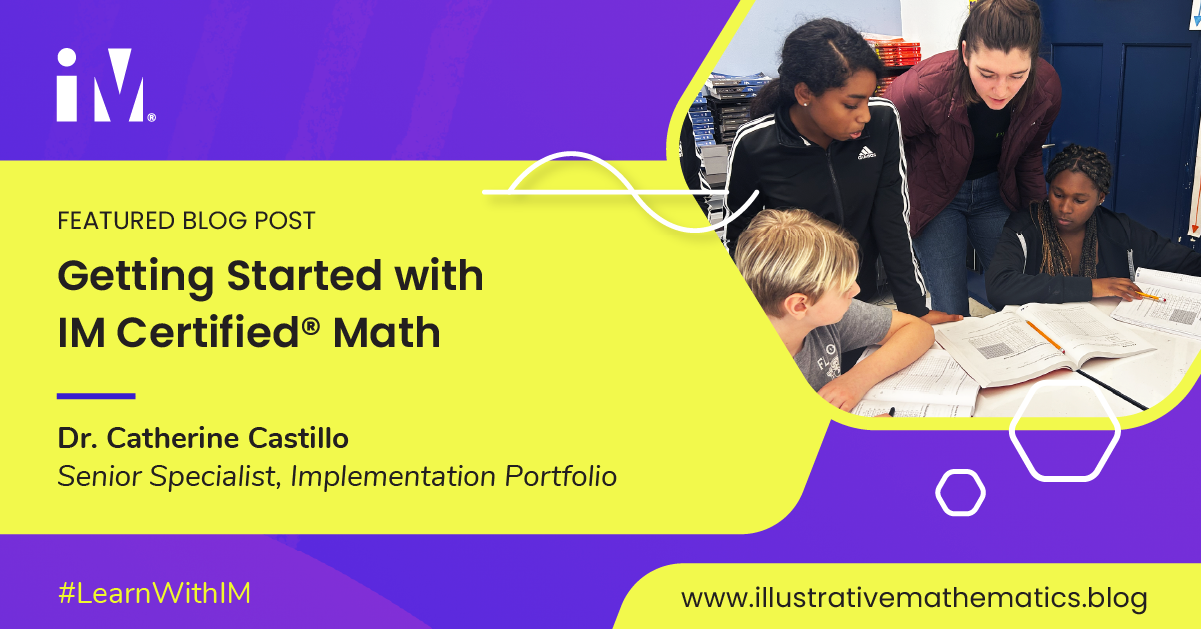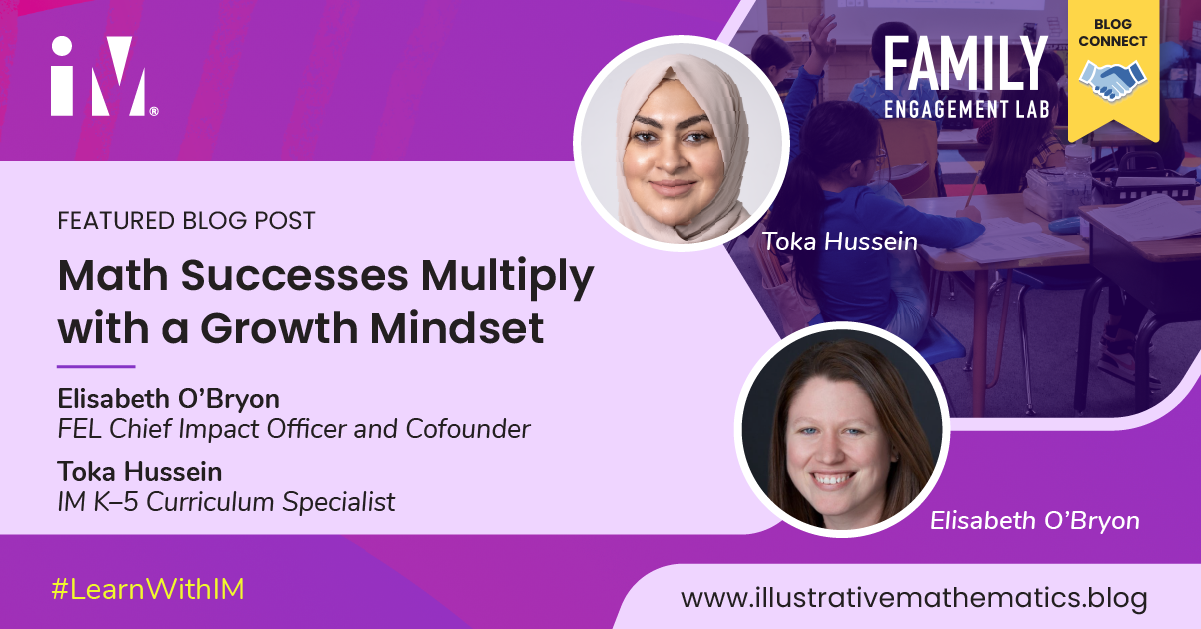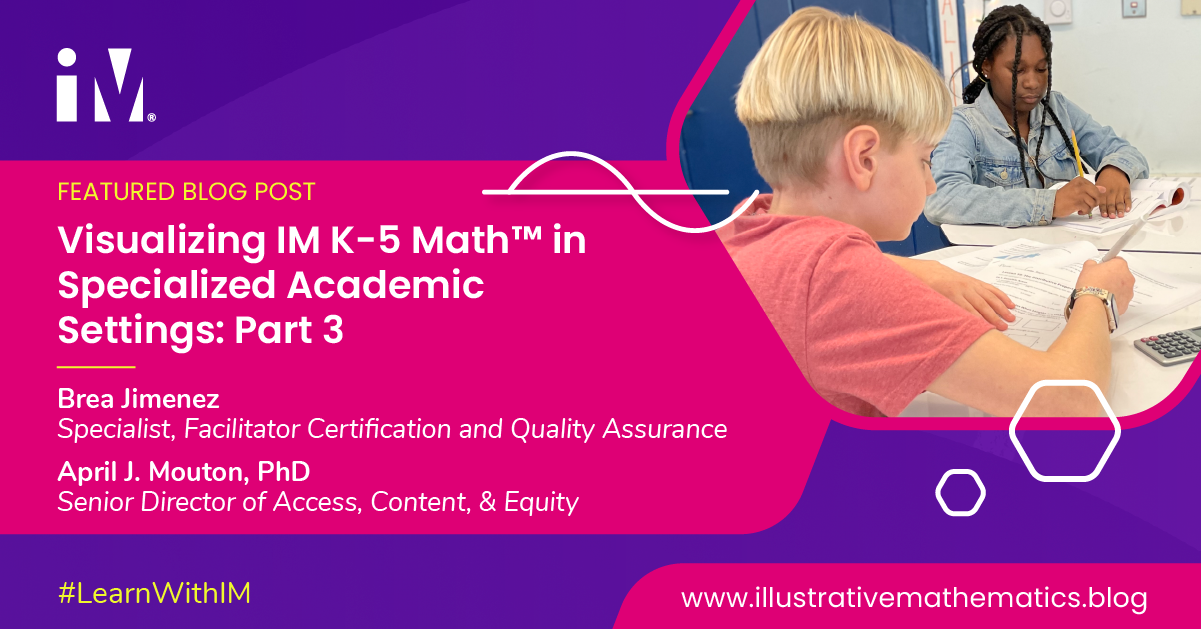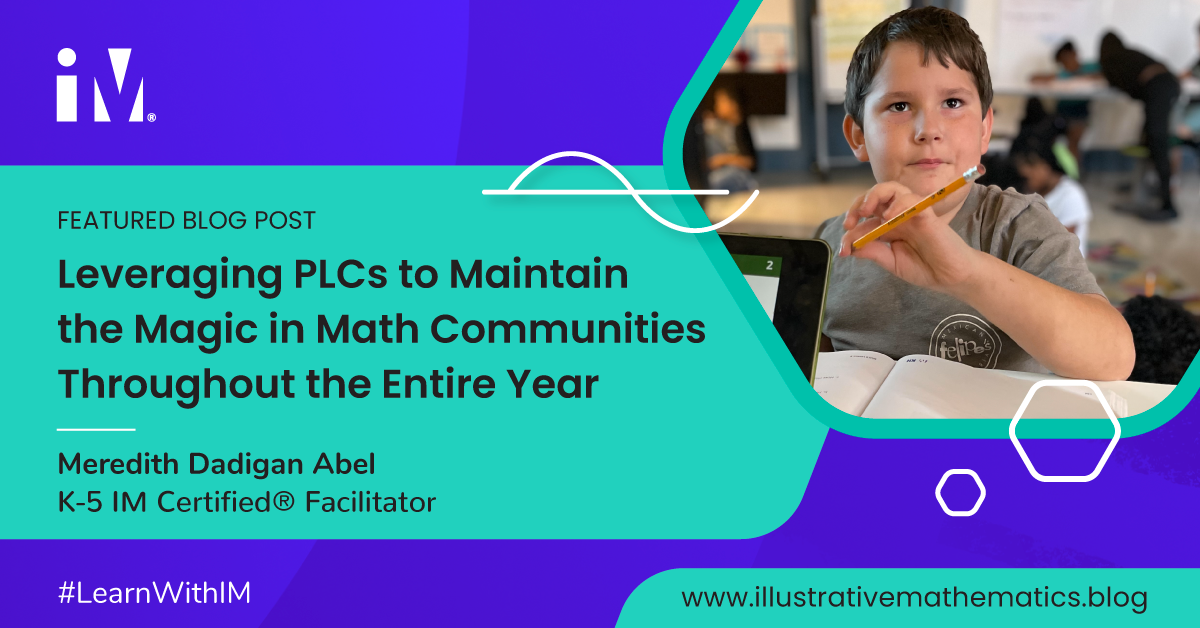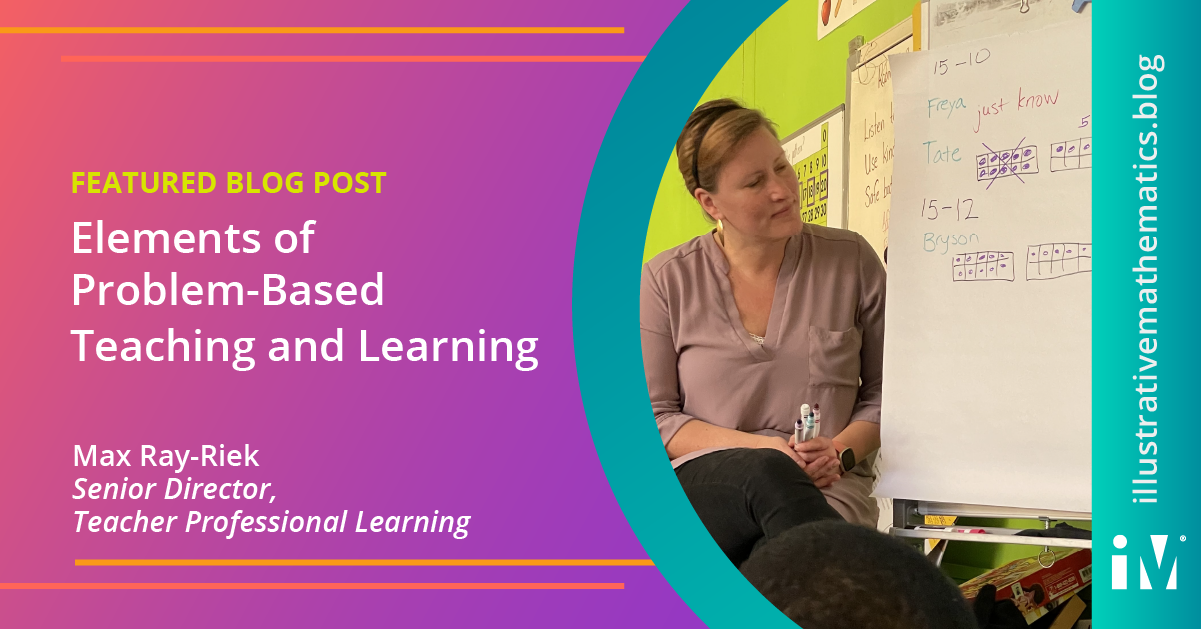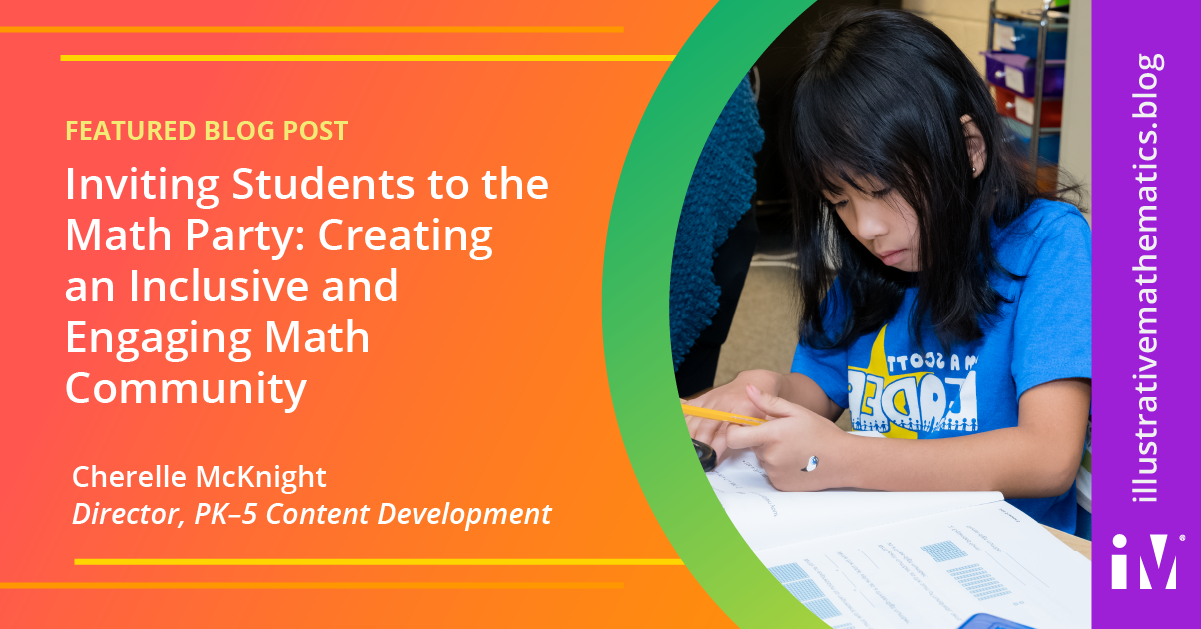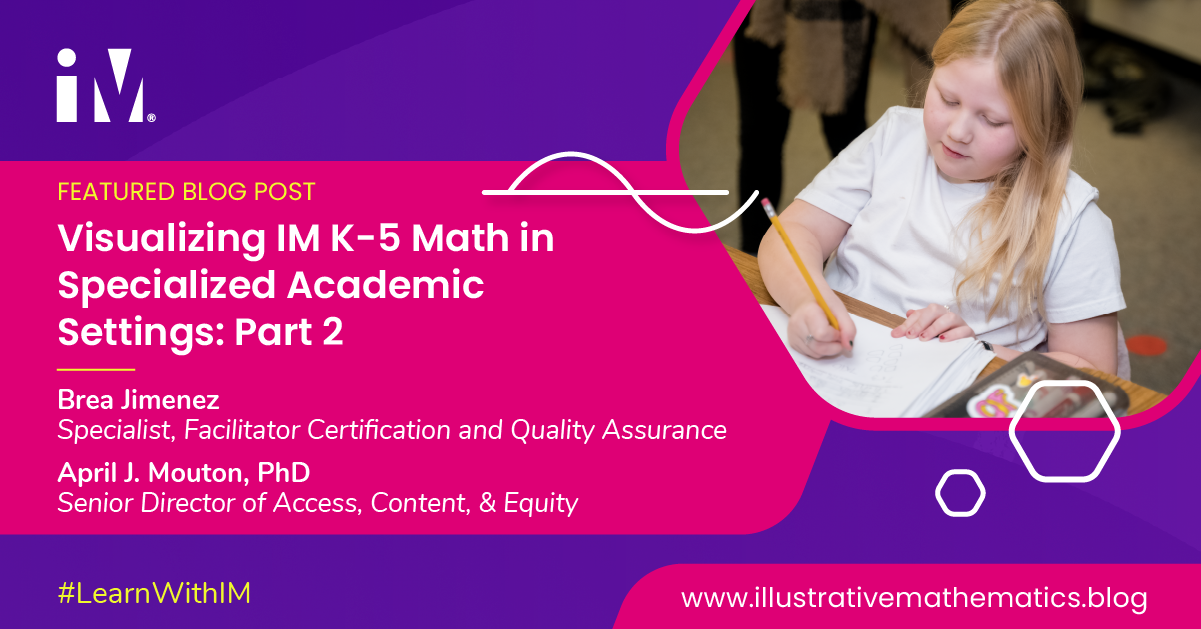IM Certified® Blog
Research Study Finds Students Using IM Certified® Curricula Outperform Peers in Math Achievement
By William McCallum, IM CEO and cofounder At Illustrative Mathematics® (IM), we believe learning mathematics is a lot like learning to ride a bike. You don’t learn by watching someone else do it—you learn by getting on the...
Unlocking the ‘Our’ in Discourse
Catherine Castillo, Sr. Implementation Specialist Brea Jimenez, Sr. Specialist, Facilitator Certification and Quality Assurance What do you notice about this NCTM framework for mathematics teaching? What do you wonder? You...
Student Voice: The Signal, Not the Noise
Anita Crowder, PhD, Senior Director of Impact Research An ideal Illustrative Mathematics (IM) classroom is one where students’ curiosity drives learning, their feedback shapes instruction, and their identities are embedded...
From Struggle to Success: A Math Coach’s Insights on IM® Math
Jennifer Cullen, Math Instructional Coach/Interventionist, Hortonville Area School District How do you transform math instruction to reach every student—from those who struggle to those who soar? We recently sat down with...
Teach and Learn Together: A Professional Learning Community in Action
Deepa Bharath, District Instructional Lead Teacher, Mathematics at Cambridge Public Schools Sarah Caban, Interim Director, K–5 Teacher Learning at Illustrative Mathematics “Illustrative Mathematics is a problem-based...
Using the IMplementation Reflection Tool: Classroom Implementation (Part 3 of 3)
Catherine Castillo, Sr. Implementation Specialist Claire Neely, Sr. Implementation Specialist "...[I]nstructional capacity for producing meaningful student learning is a function of the interactions among teachers’...
Using the IMplementation Reflection Tool for Collaborative Planning (Part 2 of 3)
Catherine Castillo, Sr. Implementation Specialist Claire Neely, Sr. Implementation Specialist “When teachers reflect on their students’ learning and their practice together, it can demonstrate that teaching challenges are...
Empowering All Storytellers: Tips for Engaging Special Populations Using IM® v.360 for Grade 6-12
Tina Cardone, Specialist, 9-12 Content Brea Jimenez, Sr. Specialist, Facilitator Certification and Quality Assurance Note: This blog post is intended to inspire creative solutions to the challenges teachers of special...
Using the IMplementation Reflection Tool: Systemic Leadership (Part 1 of 3)
Catherine Castillo, Sr. Implementation Specialist Claire Neely, Sr. Implementation Specialist “Given the critical role that school leaders play in supporting the development of coherent instructional systems at the school...
Maximizing the M in STEAM
Anita Crowder, PhD, Senior Director of Impact Research Kathleen Whittle, Cofounder Teachineers “The only way to learn mathematics is to do mathematics.” – Paul R. Halmos STEAM (science, technology, engineering, art, and...
NCTM and NCSM: A Video Interview With Bill McCallum
By Bill McCallum, IM CEO and cofounder As CEO and cofounder of Illustrative Mathematics, Bill McCallum shares his reflections from the 56th Annual NCSM Conference and NCTM’s 2024 Annual Meeting & Exposition in Chicago,...
Think Pair Share
Jennifer Wilson, Senior Director, Implementation Portfolio When teachers are curious about and trust student thinking to drive learning, they create classrooms where students learn mathematics by making sense of problems,...
Fostering Teaching Practices to Nurture Opportunities for Students to Shine
By Tori Cole, Specialist, IM Certified Facilitator Timesha Brooks, Specialist, Math Client Support Engaging Reluctant Math Students Have you encountered students who are reluctant to engage in math? Students who have...
Reintroducing the IMplementation Reflection Tool
By Claire Neely, Senior Implementation Specialist Illustrative Mathematics’ redesigned IMplementation Reflection Tool (IRT) is a powerful, non-evaluative resource intended to shape the way your school adopts and implements...
Preparation Matters: Using Strategic Planning to Maintain the Magic in Math Communities All Year Long
By Meredith Dadigan Abel, K-5 IM Certified® Facilitator When teachers come back from summer break, there is a magical feeling in the air. For me, it’s like the feeling that accompanies the first snowfall of the season....
Annotate and Acknowledge
By Jen Hawkins, IM Certified® Facilitator and Independent Curriculum Implementation Specialist As I sat at the table in the back of the room, I watched the teacher reveal an image connected to the lesson’s warm-up. She told...
Getting Ready for 2024–2025 Back to School with Illustrative Mathematics
By the IM Team Welcome to the 2024–2025 school year! As we gear up for another exciting year of learning and growth, Illustrative Mathematics is here to support you every step of the way. This year, we are more committed...
Getting Started with IM Certified® Math
By Dr. Catherine Castillo, Sr. Specialist, Implementation Portfolio Are you leading IM implementation at your school or district and want to ensure an organized and thoughtful rollout? With the upcoming launch of IM® v....
Math Successes Multiply with a Growth Mindset
By Dr. Elisabeth O'Bryon, Chief Impact Officer and Co-Founder of Family Engagement Lab and Toka Hussein, K-5 Curriculum Specialist at Illustrative Mathematics Illustrative Mathematics (IM) and Family Engagement Lab (FEL)...
Visualizing IM K-5 Math in Specialized Academic Settings: Part 3
By Brea Jimenez, Specialist, Facilitator Certification and Quality Assurance and April Mouton, Senior Director, Access, Content & Equity Special education is intended to provide bridges between challenges and triumphs...
Leveraging PLCs to Maintain the Magic in Math Communities Throughout the Entire Year
By Meredith Dadigan Abel, K-5 IM Certified Facilitator When teachers and students come back from spring break, spring fever is in the air, and classroom routines may falter. While teachers have spent the entire year setting...
Elements of Problem-Based Teaching and Learning
By Max Ray-Riek, Senior Director, Teacher Professional Learning Our vision at IM is a world where all students know, use, and enjoy mathematics. Educators in our IM Community work toward this vision in classrooms day after...
Inviting Students to the Math Party: Creating an Inclusive and Engaging Math Community
By Cherelle McKnight, Director, PK-5 Content Development At one of my former schools, students who passed out birthday party invitations had to invite their entire class. While I disagreed with how the policy was...
Visualizing IM K-5 Math in Specialized Academic Settings: Part 2
By Brea Jimenez, Specialist, Facilitator Certification and Quality Assurance and April Mouton, Senior Director, Access, Content & Equity IM believes in a world where all learners know, use, and enjoy mathematics. We...
